After the Concorde was retired in 2003 because of economic and environmental issues, supersonic passenger jets vanished from our skies. Yet, nearly two decades later, they might be making a return. A startup has promised an affordable supersonic jet, which runs on a net zero carbon fuel. Is this going to be a profitable and eco-friendly boom or just a noisy bust?
Back to the future at supersonic speed
There’s a pretty clear path toward cleaner transportation when it comes to cars and trucks, but larger scale transportation, like flight, is a harder nut to crack. That’s why I’ve looked at things like electric flight and biofuels in other videos. We also tend to be impatient, especially in this fast-paced, global economy. Having breakfast in New York, lunching in London and enjoying dinner back in The Big Apple. Sounds like an impossible schedule, right? And an exhausting one…but that was possible nearly 50 years ago, when the Concorde was launched.1 Jointly developed by British Airways and Air France, the world’s first commercial passenger supersonic jet cruised at Mach 2, meaning traveling twice as fast as sound. Thanks to this sound-breaking speed, people could fly from New York to London in just under 3 hours.2
So, why are we taking twice as long to fly the same distance today? One of the things grounding the Concorde was the so-called sonic boom. This is the bang made by a plane that breaks the speed of sound at 700 miles per hour.3 However, the speed of sound isn’t the only thing to get broken by the Concorde. After the Air Force ran a test over Oklahoma City in the 1960s, residents reported hundreds of cracked windows. As a result of issues like that, the Federal Aviation Administration (FAA) deemed the US territory as a no-supersonic-flying zone.4
Aside from noise disturbances, environmental concerns also contributed to the negative sentiment towards the Concorde. In fact, the supersonic jet was also super-polluting. Compared to a subsonic plane, it generated pollutants at 5x the rate.5 On top of that, its NOx emissions were puncturing another important barrier, a.k.a. ozone layer.6
Nevertheless, the Concorde was officially grounded for good because of unfavorable economics. The deadly plane crash in 20007 along with the 9/11 attacks the year after dramatically dropped the passenger demand for flying. As a result, British Airways and Air France could no longer sustain fuel and other operating costs.8
Yet, there might be another chance of traveling supersonically in the future. Last January, Boom Supersonic unveiled their plan of building a massive factory at Piedmont Triad International Airport in North Carolina. This new plant would be used for producing their Overture supersonic jet9 This 80 seat Concorde 2.0 isn’t scheduled to test fly until 2026 at a top speed of mach 1.7, which is about twice as fast as a Boeing 747.10 However, you won’t be able to jump on the plane yourself until testing is complete in 2029.11 In the meantime, Boom has been closing deals with different airlines. Japan Airlines was the first one betting on their supersonic technology, securing 20 aircrafts in 2017.12 Domestically, United Airlines broke the sound of silence by ordering 15 supersonic jets in 2021.13 The most recent airline to jump on the supersonic bandwagon was American Airlines, who already paid a non-refundable deposit for securing 20 of Boom’s jets.14 All these deals give airlines the option of buying more planes later on. Yet, all these agreements are valid as long as Boom’s supersonic flights meet safety, operating and sustainability requirements. So, how is the Colorado-based startup doing with that?
Aviation technology is booming
Because of the Concorde’s eventual failure, many believe supersonic jets will never take off again. Let’s run through some of the company claims and then we’ll get to some of the analysis. First is how Boom is flying high on safety. As claimed by the startup, their supersonic aircraft is mostly based on already-proven subsonic technologies and, in some cases, exceeds current FAA safety standards.15 Some smart design adjustments helped them boost their confidence. For example, instead of aluminum, which was the major component of the Concorde’s structure, they’re relying on a carbon composite, which is more thermally stable under supersonic conditions.16 Not to mention it’s much lighter, which saves on fuel and leads me to the next point. Apart from trying to deliver a safer journey to passengers, the startup is aiming to make their flights affordable. As touted by their CEO, an Overture ticket will be 4x cheaper than a Concorde ticket.17 However, his long term dream is to charge $100 for a 4-hour flight, which is very ambitious to say the least.18 To achieve that target, the startup wants to hit a budget of $200 million per plane.19 Just to give you some perspective, the newest Boeing 747 model costs $386.8 million.20
But how will the Spirit Airlines of supersonic flights keep their costs so low and clean?
Once again, they’re leaning in on a more cost-effective aircraft architecture. For instance, the Overture’s contoured fuselage and gull wings reduce drag, which requires less engine thrust and fuel. Its four turbofan engines work without relying on fuel-inefficient burners. Speaking of which, Boom is aiming have their planes running on up to 100% sustainable aviation fuel (SAF), which could emit up to 80% fewer carbon emissions than kerosene … but more on that later.21 That’s a massive improvement over the kerosene-guzzling Concorde22. Typically, SAFs are made from greener feedstock, like fast-growing algae or leftover cooking oil. As for the Overture, Boom will be tapping into CO2-to-fuel technology from the company Prometheus. There’s a lot to unpack here when it comes to these SAFs.
Prometheus’ direct air capture (DAC) system23 grabs CO2 from the air and upcycles it into a net zero SAF, which Prometheus claims will be as cheap as fossil fuels … but again … more on that claim later. They’re hoping to have 500 DAC plants up and running by 2030. Each of their facilities is expected to convert 900 tons of CO2 into 100,000 gallons of green fuels every year.
So, what’s their trick? It’s called aqueous CO2 electrolysis.24 First, you mix the captured carbon dioxide with a saline solution. Then, you hit the blend with renewable electricity to trigger electrochemical reactions that yield complex alcohols. These are digested into simpler molecules like ethanol thanks to a catalyst made of carbon and copper. After that, a selective carbon nanotube-based membrane separates ethanol from water. Basically, ethanol’s carbon atoms are held back by the inner part of the tubes, while water flows away more easily.25 This technique is supposed to require 90% less energy than the conventional distillation process, as it does not require any water to be vaporized. Finally, catalysts will help convert the purified ethanol into jet fuel. Unlike similar solutions, the Prometheus process is supposed to work at atmospheric pressure and room temperature. In theory, this should bring down their capital costs, which I’ll get to in a bit. Other than investing in Prometheus technology, Boom is also consulting with multiple organizations to scale up SAF adoption. This helps to fuel their transition towards net zero carbon operations, which Boom hopes to achieve by 2025.
However, Boom is not the only player in the supersonic game. Virgin Galactic is working on an even faster plane, expecting to hit mach 3, which nearly doubles Overture’s max speed. In practical terms, this means going from New York to London in about 2 hours rather than in 3 and a half hours.26 After successfully completing a mission concept review in 2020 with the help of NASA experts, Virgin partnered with Rolls-Royce to develop the engine propulsion technology.27
While Virgin is breaking Boom’s speed limit, a partnership between NASA and Lockheed is making a noise about a less noisy supersonic plane. Their X-59 jet will produce a sonic thump rather than a sonic boom. So, think of a basketball bounce rather than fireworks. While it still breaks the sound barrier, the X-59 is designed to be quieter than Overture. Its longer, pointy nose and sharper wings will equally spread the soundwaves along the length of the aircraft. This sleeker airframe will prevent individual soundwaves from adding up, which muffles the boom.28 Furthermore, this will reduce the impulse force felt by the airframe. Thanks to the improved aerodynamics concocted by Lockheed, the X-59 will generate a 75 Perceived Level decibel (PLdB) noise on the ground. Just to give you a sense of scale, the Concorde’s sonic boom was 105 decibels.29 However, the lower noise pollution will come at the expense of range and passenger capacity.30— two things Boom didn’t want to sacrifice. The quieter X-59 aircraft is currently being tested on the ground and is meant to take off later in 2022.
Will we have another ‘Concorde moment’?
As you can see, there are a lot of promising technologies and company claims that could land us faster, quieter, lower-price and greener supersonic flights. However, sound is not the only barrier supersonic airlines will have to break. All of the aircrafts we’ve talked about haven’t even touched the runaway and it will take time to test them to meet all the necessary regulations before passengers can step onboard.
After 2 years of collaboration, Boom has decided to sack Rolls Royce and is now on the lookout for a new engine developer,31 which will most likely cause delays in their timetable. For a point of comparison, about 20 years went by between the Concorde engine’s first test and the aircraft’s first flight.32 Also, an aerospace analyst criticized Boom’s plan of increasing the number of engines from three to four, warning them against poorer economics and higher emissions.33
SAFs are not quite ready either. As of today, they make up less than 0.1% of the overall aviation fuel34 and cost up to 8x more than regular jet fuel.35 Besides a limited supply, safety regulations compel airlines to use no more than 50% SAF in their blend.36 According to experts, this conservative threshold gives aircraft manufacturers enough confidence in using this new type of fuel, though this ratio may increase as confidence builds.37 The International Air Transport Association (IATA) predicts a 50-fold increase in the production of SAFs by 2025.38 To accelerate SAF roll out in America, last year the US government launched the ‘Sustainable Aviation Fuel Grand Challenge’.39 As part of this initiative, the Biden administration aims at producing a sufficient amount of SAFs to meet 100% of national aviation demand by 2050.40 Yet, a recent report41 from the Center for Biological Diversity flagged this challenge to be grander than expected. Basically, our current biofuel availability is the limiting factor. According to the report, we could only quench 38% of our thirst for SAFs in the best-case scenario.
The authors also questioned the climate mitigation potential of most SAFs, arguing that relying on those alone won’t get us to net zero aviation. Instead, they recommended that the government improve aircraft fuel efficiency and push the shift towards 100% electric flights. That’s easier said than done though. I covered this in a previous video42, but battery energy density is the limiting factor for electric planes. To be more specific, current batteries don’t carry enough electricity per unit of weight, which means long-haul electric aircraft with current technology be too heavy to fly.
But when are SAFs not climate-friendly? It depends on the feedstock they’re made from. For instance, the International Council for Clean Transportation (ICCT) is not cheering for crops like soybeans.43 Apart from competing with food production, farming them to fuel supersonic planes would promote deforestation. Another thing to consider is how much CO2 soybean plantations will absorb while growing. When performing a life cycle assessment (LCA), the UN found that a US soy-based SAF would save only 27% carbon emissions compared to Jet A, a.k.a. kerosene.44
The alternative implemented by Enviva is not any more cheerful for the environment. The world’s largest wood pellet producer is essentially cutting trees and giving them to a company to make biofuels for flights.45 I don’t know about you but this doesn’t sound sustainable to me. When you burn that fuel, you’ll release the carbon originally stored in the wood. Although Enviva claims they would replant whatever they cut, some argue that trees won’t grow back fast enough to compensate for those emissions. In other words, the fuel’s net zero claims are up in the air. Things would get even worse if Enviva were to supply wood pellets to their client because pelletization is a carbon-intensive process.
So, how about Boom’s SAF? Capturing CO2 from the air without touching a single tree to make a fuel that’s priced as much as standard gasoline sounds much better … but may be too good to be true. And for some academics it’s just that.46 Their skepticism comes from Prometheus not having demonstrated a fully working system or subjecting it to a peer-review process yet.
Plus, their CEO’s ambitious but unmet promises are not helping build trust. Apparently, the startup had promised to sell their greener gasoline at $3 a gallon in 2020. Yet, they’re not even close to that today. But even when using the most sustainable fuel, we would have a supersonic efficiency issue. According to ICCT, supersonic flights would burn up to 9x more fuel per passenger per kilometer than their subsonic flying buddies.47 Aside from implying a higher environmental impact, this would also compromise their economics. That ties back to the questionable $100 a ticket that Boom hopes to achieve.
Cleaner fuels and a more efficient aircraft design might bring supersonic flights back to the future. Yet, the Concorde debacle is still too vivid in our minds and there are many technical challenges ahead to be addressed. Perhaps it’s better for all of us to work on our patience and be happy traveling a little slower, but it’s worth keeping an eye on Boom and seeing how some of the technologies will clean up aviation. There are aspects of the engineering, materials, and more efficient engines that could make an impact on subsonic planes. While I’m hopeful, I think it’s a pretty steep hill they have to climb.
- “Concorde | Summary, History, & Facts | Britannica.” ↩
- “Why the Concorde Failed, and When Supersonic Planes … – YouTube.” ↩
- “What causes a sonic boom? – Science | HowStuffWorks.” ↩
- “This plane could cross the Atlantic in 3.5 hours. Why did it fail?.” ↩
- “Supersonic, super-rich, super-polluting: the next generation of ….” ↩
- “Emission Measurements of the Concorde Supersonic Aircraft in the ….” ↩
- “Continental ‘responsible’ for Concorde crash in 2000 – BBC News.” ↩
- “Why did Concorde stop flying and how fast did it fly? | The US Sun.” ↩
- “Boom will build a supersonic jet factory in North Carolina | TechCrunch.” ↩
- “Fastest Airplanes Commercial Passengers Can Fly – NerdWallet. ↩
- “Supersonic Passenger Travel by 2029.” ↩
- “Our partnership with Japan Airlines | by Boom Supersonic.” ↩
- “Boom – United Goes Supersonic.” ↩
- “American Airlines Announces Agreement to Purchase Boom ….” ↩
- “Boom Supersonic will ‘improve upon the safety standards’ of ….” ↩
- “Boom – FlyBy – It’s About Time For a Bold New Era of Supersonic Flight.” ↩
- “Boom Supersonic will ‘improve upon the safety standards’ of ….” ↩
- “Boom Supersonic: ‘Anywhere in the world in four hours for $100’.” ↩
- “American has ordered 20 Boom Overture supersonic jets and is set ….” ↩
- “Boeing 747-200F from Air Charter Service.” ↩
- “The future of ‘green’ air travel is here with sustainable aviation fuels.” ↩
- “A Role for the Concorde, Even With Its High Costs.” ↩
- “Prometheus to Supply Carbon Neutral Fuel in 2023 Despite Skeptics.” ↩
- “CO2-to-Fuels Renewable Gasoline and Jet Fuel Can Soon Be Price ….” ↩
- “This former playwright aims to turn solar and wind power into gasoline.” ↩
- “Virgin Galactic’s supersonic jet would go NYC to London in 2 hours.” ↩
- “Supersonic revival: who will be fastest to the finish?.” ↩
- “Why the Concorde Failed, and When Supersonic Planes … – YouTube.” ↩
- “X-59: NASA’s quest to build a ‘quiet’ supersonic plane | CNN Travel.” ↩
- “Will Boom Bring Supersonic Back? – YouTube.” ↩
- “Boom Supersonic and Rolls-Royce part ways on engine development.” ↩
- “American Airlines Orders 20 Supersonic Jets—Is It … – Treehugger.” ↩
- “American Airlines places deposit on 20 supersonic planes – AP News.” ↩
- “Airlines Rush Toward Sustainable Fuel But Supplies Are Limited.” ↩
- “Oil giant Shell sets sights on sustainable aviation fuel take-off | Reuters.” ↩
- “Fact Sheet 2 Sustainable Aviation Fuel: Technical Certification – IATA.” ↩
- “Sustainable aviation fuels are not all the same and regular ….” ↩
- “IATA predicts surge in sustainable aviation fuel – Travel Weekly.” ↩
- “S1-Signed-SAF-MOU-9-08-21_0.pdf – Department of Energy.” ↩
- “FACT SHEET: Biden Administration Advances the Future of ….” ↩
- “The Biofuels Myth – Center for Biological Diversity.” ↩
- “Why haven’t electric planes taken off yet? Electric aircraft explained.” ↩
- “Zero cheers for the supersoynic renaissance.” ↩
- “American Airlines Orders 20 Supersonic Jets—Is It … – Treehugger.” ↩
- “Will new supersonic jets really be carbon-neutral?.” ↩
- “This $1.5 billion startup promised to deliver clean fuels as cheap as ….” ↩
- “Environmental limits on supersonic aircraft in 2035.” ↩



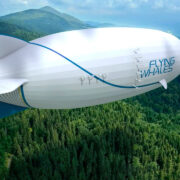
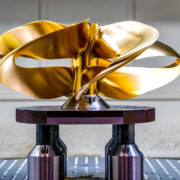

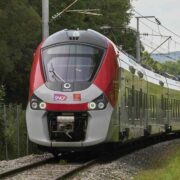
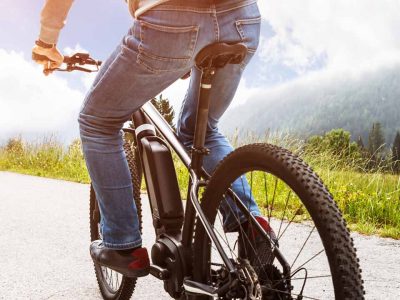
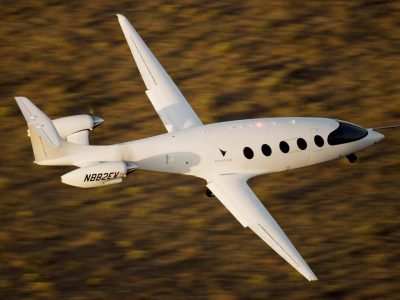
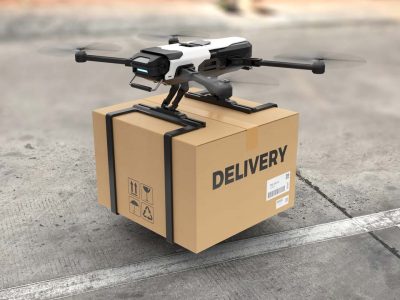
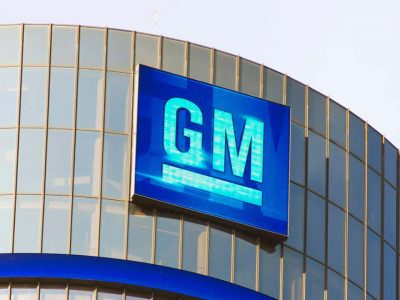


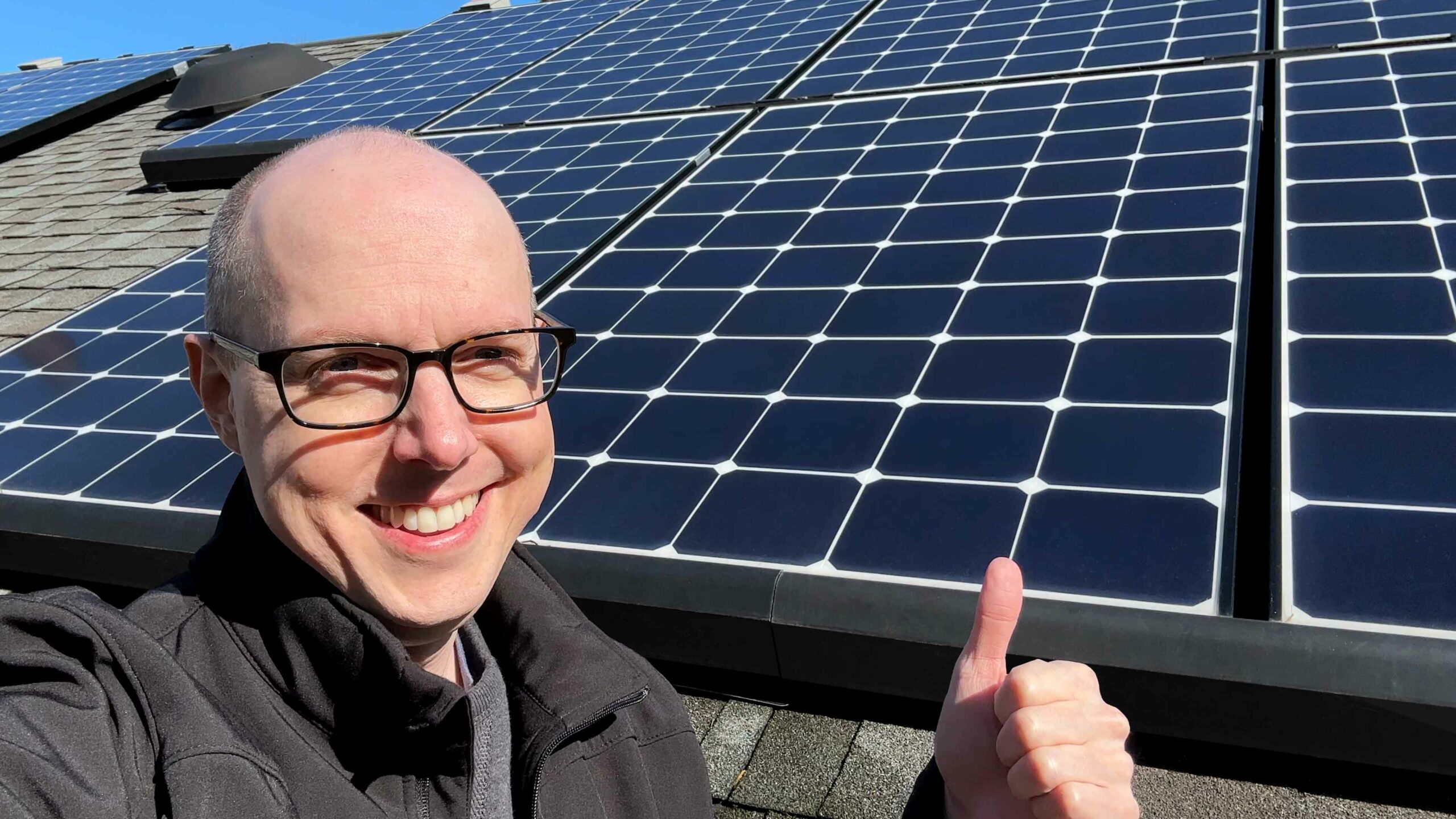


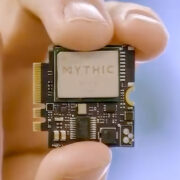

Comments